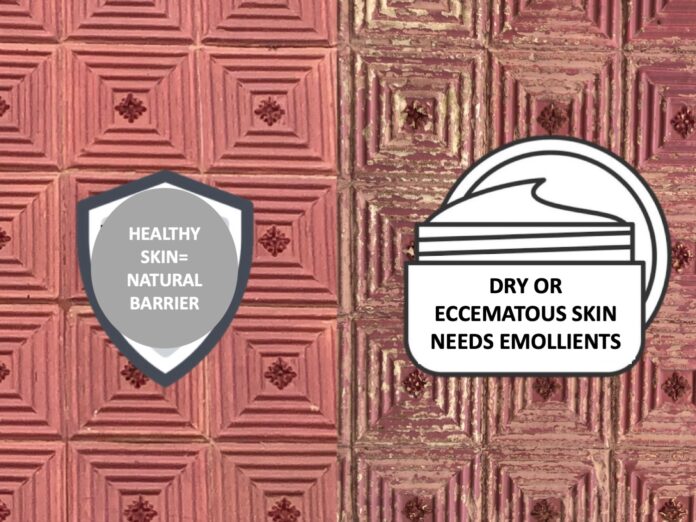What is the best moisturising recommendation for the elderly with dry skin or those with eczema secondary to venous insufficiency?
You have probably asked yourself this question many times. However, while dry skin and atopic dermatitis in children are much talked about (and many products have been marketed for their treatment), research on the use of emollients in older people and stasis eczema is very scarce.
I was encouraged to write this post after reading this recent Cochrane review: “Hygiene and emollient interventions for maintaining skin integrity in older people in hospital and residential care settings” Although skin dryness and fragility, as well as pruritus, are very prevalent in older people (and have a huge impact on quality of life), the main conclusion of this meta-analysis is that more studies are needed to make recommendations on the use of emollients and hygiene products to protect and repair the skin barrier in older people.
As I discussed in the post “Eczema craquelé: when skin deteriorates like paintings”, in older people, the stratum corneum (the most superficial layer of the epidermis) does not have an adequate barrier function, with a consequent increase in permeability that will lead to inflammation and itching. Dry skin lesions occur particularly on the legs. So, although little discussed, considering eczema due to dryness and eczema due to venous hypertension, leg eczema in adults and older people competes in frequency with atopic dermatitis in children.
Although more studies are needed in older people and people with venous insufficiency, the use of emollients seems essential on a preventive and therapeutic level whenever we encounter dry skin or eczema.
To understand this need for the use of emollients, we first need to understand the physiology of the skin barrier (I recommend the article Use of emollients in dry-skin conditions: consensus statement).
The stratum corneum (outermost layer of the epidermis) forms a barrier that restricts water loss and prevents the penetration of irritants and allergens. It is composed of well hydrated and compact corneocytes (degenerated keratinocytes) that are surrounded by a matrix of intercellular lipids (ceramides, cholesterol and fatty acids). The corneocytes contain the natural moisturising factor, a set of hygroscopic compounds that attract and retain water in the cells. Together, these natural moisturisers are necessary to maintain skin plasticity and prevent dehydration of the corneocytes, which would lead to cracking. Both the lipid-filled extracellular compartment and the humectant-filled intracellular compartment are essential for the barrier function and water retention of the stratum corneum, as well as maintaining a low pH. In other words, it is “a wall of bricks held together by cement”. Soaps and detergents remove lipids, strip the natural moisturising factor and increase the pH, so it is essential to use syndet cleansing products.
In contrast to creams that only provide hydration, emollients also prevent water loss. Therefore, we will always recommend emollients in case of diseased skin (dryness, eczema, psoriasis, other dermatitis).

Simple emollients leave a thin occlusive layer of non-physiological lipids or oils, such as petroleum jelly, on the surface of the skin, thus reducing water loss from the stratum corneum. Emollient products can be formulated with additional ingredients such as humectants, physiological lipids and antipruritic agents. Humectants, such as urea and glycerol, attract and retain water in the stratum corneum, thereby compensating for reduced levels of natural moisturising factor and other natural humectants in diseased and ageing skin. Physiological lipids, such as ceramides, cholesterol and free fatty acids, replenish and restore the intercellular lipid matrix.
Not all emollients are the same, so the choice of the best product will depend on the needs of each individual’s skin. In addition, for effective protection of the stratum corneum, we should also use cleansing products with emollient action, short showers and avoid aggressive rubbing drying (see more recommendations in the post: “Eczema craquelé: when the skin deteriorates like paintings”).
Proper use of emollients can have a direct impact on the quality of life of all people with dryness or eczema on legs, by reducing disabling symptoms such as itching and reducing outbreaks of dermatitis and the need for topical corticosteroids.




